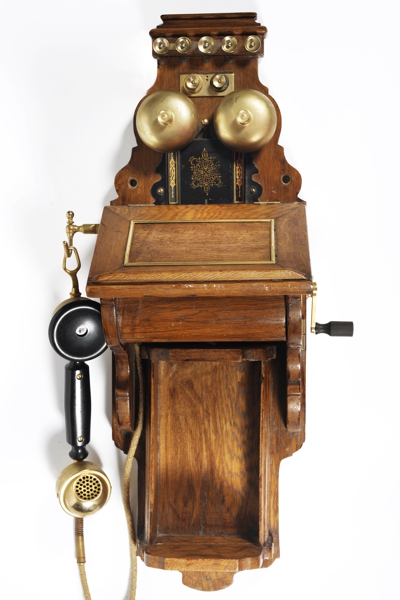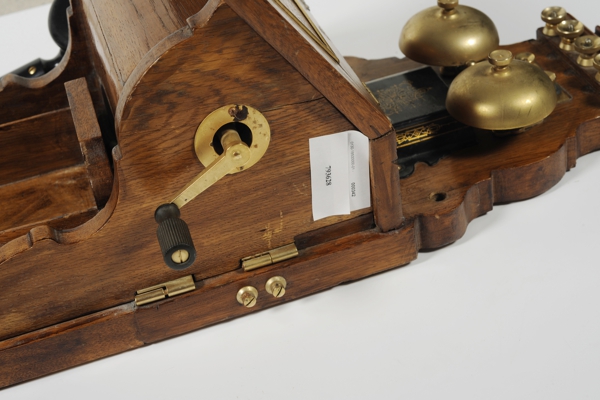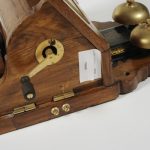Collections
L. M. Ericsson telephone wall set
Wooden magneto wall phone mounting on a violin-shaped wood (walnut) cabinet (the device is also called "fiddleback" due to its shape). On the top is a dual bronze bell ringer. At the middle, the device is fitted with a sloping wooden box catering for the phone's internal functions, and also serving as a stand for the purpose of a telephone conversation. On the right is a crank (gold-plated metal with a black tip) and on the left a gold-plated metal hook switch whereon is mounted the gold-plated metal handset (probably a latter addition) whose handle and mouthpiece are made from black plastic. The handset is connected with the device with a pale yellow cloth cord. The bottom of the device (missing its facade - "door") offered the possibility to store telephone directories or other relevant documents. Due to the microphones' sensitivity to the bell ringers' striking and vibrations, there was a need for well-built, big wooden wall-mounted constructions. However, such constructions were rapidly replaced by - more practical - "box"-style wooden constructions. In an effort to differentiate themselves from the competitors, the companies turned to disparate styles for decorating big-sized phones, Especially as regards Ericsson, these telephone series were quite similar to wall-mounted clocks at that time. The clock represented exactness and discipline that held high status in the developing industrial society, where trade and mass transportation were essential elements.




